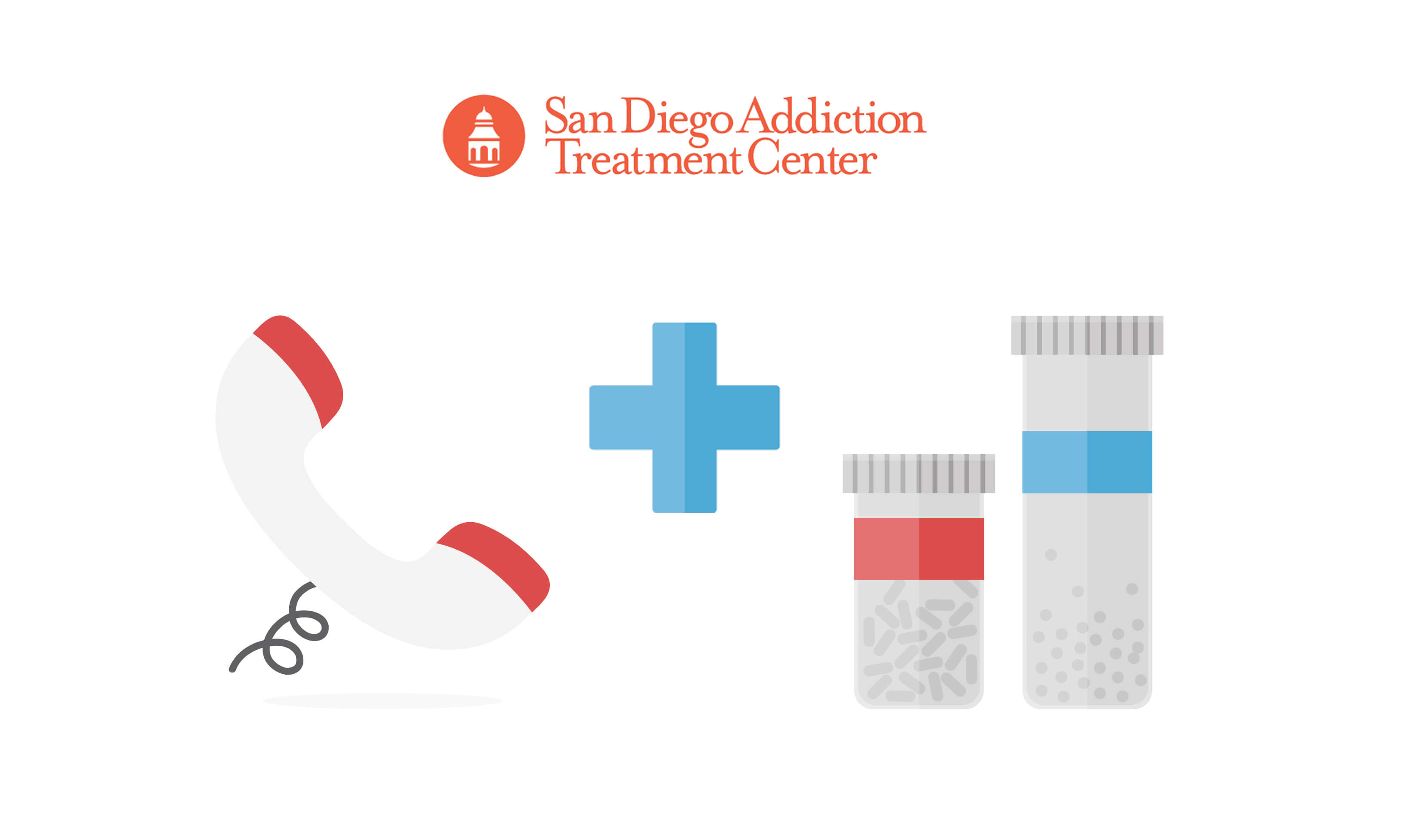
According to the Substance Abuse and Mental Health Services Administration (SAMHSA) and numerous other professional sources, medication-assisted therapy or medication-assisted treatment (MAT) refers to the process of combining behavioral treatments and medicines in the treatment of substance use disorders.
How Is MAT Used to Treat Substance Use Disorders?
There are no medications that can cure substance use disorders. Instead, medications are used to help in the treatment of substance use disorders. According to SAMHSA and the National Institute on Drug Abuse (NIDA), the primary intervention for individuals with substance use disorders is to get them engaged in formal substance use disorder therapy and other adjunctive forms of treatment, such as social support groups (e.g., 12-Step groups, community support groups, etc.), volunteer work, and complementary and alternative treatments, such as music therapy, animal assisted therapy, etc.
Medication-assisted therapy can be used in a number of ways to assist in the treatment of substance use disorders.
- To help in the treatment of comorbid (co-occurring) medical conditions, such as hypertension, arthritis, diabetes, etc.
- To help individuals who have a dual diagnosis (a co-occurring mental health disorder diagnosis and a substance use disorder)
- As withdrawal management techniques, to control specific withdrawal symptoms, the general withdrawal process from certain drugs or alcohol, cravings, etc.
- To help prevent relapse by controlling drug or alcohol cravings
Medications do not directly address the issues that are involved in an individual’s substance use disorder; rather, they offer additional interventions to help in the treatment of certain physical and psychological symptoms associated with these disorders. Thus, despite many claims by medical associations that addiction is a disease that requires medical treatment, there actually is no formal medical treatment that can solely be used to address addictive behaviors. Instead, the primary treatment focus for all substance use disorders is counseling or psychotherapy.
These interventions can be enhanced by medical treatments; however, medical treatments cannot be used in place of these interventions.
Treating Comorbid Medical Conditions and Substance Abuse
According to NIDA, one of the tenants of effective substance use disorder treatment is to address any comorbid medical conditions. In some cases, comorbid medical conditions, such as arthritis, may be associated with the development of opiate use disorders, alcohol use disorders, and other substance use disorders. In these cases, it should be obvious that individuals need to be treated as a whole person, and all their needs must be met, in order to foster long-term recovery. In other cases, the comorbid medical condition may not have a significant association with the individual’s substance use disorder; however, when individuals begin treatment for addiction, they may become stressed, unsure of themselves, and need stability. Individuals who suffer from medical conditions can be more vulnerable to relapse as a result of the increased stress of having to deal with an untreated medical disorder while trying to learn a new lifestyle of recovery. In addition, individuals in recovery should attempt to lead a healthy lifestyle, and this would include getting treatment for any co-occurring medical conditions.
MAT for Dual Diagnoses

Most of the time, the terms dual diagnosis and co-occurring disorders are used to refer to individuals who are diagnosed with a substance use disorder and some other comorbid mental health disorder. In some cases, individuals with co-occurring disorders may require medication for their psychological disorder, and in other cases, simple behavioral treatments for both co-occurring disorders may be sufficient.
Because individuals should be thoroughly assessed before they enter treatment, any potential comorbid conditions, both psychiatric and physical, should be identified before the treatment plan is drawn up. Individuals with a co-occurring psychiatric disorder will require this condition to be addressed along with their substance abuse. According to the American Society of Addiction Medicine (ASAM), failing to address the co-occurring psychiatric disorder in an individual with a dual diagnosis results in a situation where the client is almost certainly doomed to relapse.
The specific medication chosen will depend on the specific type of psychiatric disorder the individual has been diagnosed with, other personal factors as determined by the prescribing psychiatrist, and its compatibility with recovery from a substance use disorder. For instance, an individual with an alcohol use disorder who also suffers from an anxiety disorder could be at increased risk for relapse if they were prescribed benzodiazepines without sufficient monitoring and a plan of behavioral intervention to teach them to deal with their anxiety without long-term medication use. Typically, the use of benzodiazepines in the treatment of anxiety disorders was conceptualized as a short-term approach because these drugs are also highly addicting, and individuals who use them for a sufficient length of time are prone to developing physical dependence on them. Trying to get an individual to recover from an alcohol use disorder while maintaining them on benzodiazepines may not be a sound approach. Instead, other medications like BuSpar may be more appropriate for treating anxiety in individuals with alcohol use disorders.
On the other hand, individuals with psychotic disorders (e.g., schizophrenia) or bipolar disorder who are not as successfully treated by behavioral interventions like psychotherapy require long-term treatment with medications.
Withdrawal Management
Individuals who have developed physical dependence on alcohol or some other substance will benefit from a physician-assisted withdrawal management program in the early stages of recovery. A physician-assisted withdrawal management program, also known as medical detox, is another form of medication-assisted therapy. Individuals undergoing the withdrawal process are monitored by an addiction medicine physician or psychiatrist, trained in addiction medicine, and they are administered specific types of medications (depending on their drug of abuse) to curb withdrawal symptoms, control cravings, and prohibit the development of potentially serious conditions, such as seizures.
Relapse Prevention
Withdrawal management medications are in a sense also a form of relapse prevention treatments because individuals undergoing withdrawal symptoms are at an extreme risk for relapse. In other cases, there are some specific medications that may reduce cravings. Though they are not specifically designed to control other withdrawal symptoms, they can be administered to individuals in recovery to help them avoid relapse.
- ReVia (naltrexone) is an opioid antagonist medication that has some success in reducing cravings in individuals with opiate use disorders and alcohol use disorders.
- Campral (acamprosate) is a medication that is believed to affect several different neurotransmitters in the brain. It has been approved for the treatment of cravings in individuals recovering from alcohol use disorders; however, it is not approved or designed to be used without the individual being involved in behavioral interventions, such as substance use disorder therapy.
- Gablofen or Lioresal (baclofen) is a muscle relaxant that may have some utility in reducing cravings for alcohol and some other drugs.
- Gabapentin (Neurontin) and Topamax (topiramate) are anticonvulsant medications that can also be used to treat neuropathic pain. They have been shown to reduce cravings for alcohol and other drugs, such as stimulants, in some individuals.
- Naloxone is an opioid antagonist drug that is used to treat individuals who have overdosed on heroin or other opiate drugs. In addition, it is a safeguard in the opioid replacement medication Suboxone. If individuals attempt to abuse Suboxone, the naloxone component is activated, and this discourages abuse.
- Antabuse (disulfiram) does not directly affect cravings for alcohol, but it can assist in relapse prevention. When individuals who are taking this drug drink alcohol, they become violently ill. This drug may help prevent relapse. Unfortunately, as is the case with many MATs, compliance is often a problem.
Conclusions
Medication-assisted therapies are designed to assist formal substance use disorder therapy and other behavioral interventions in the treatment of individuals who have substance use disorders. These medications are not designed to be the primary mechanisms of treatment for individuals in recovery, but their use can be a deciding factor in the success of sustained recovery.
MATs have no special or magical powers to help individuals in recovery. While they can assist in recovery, individual engagement in therapy is the primary driver of success. Individuals who have significant issues with compliance with their medications or with the demands of therapy will often struggle with recovery and are at increased risk to relapse. Essentially, medications do not work if they are not taken properly.
Get Help Now.
Has addiction stolen your loved one? Take action and call (619) 577-4483 or fill out this form to speak with a Treatment Consultant about our drug rehab center or one of our facilities across the United States.
